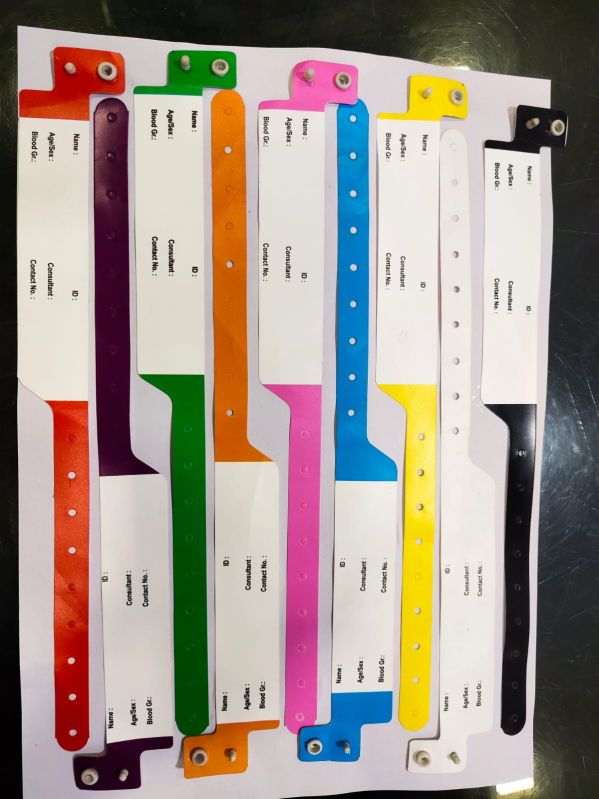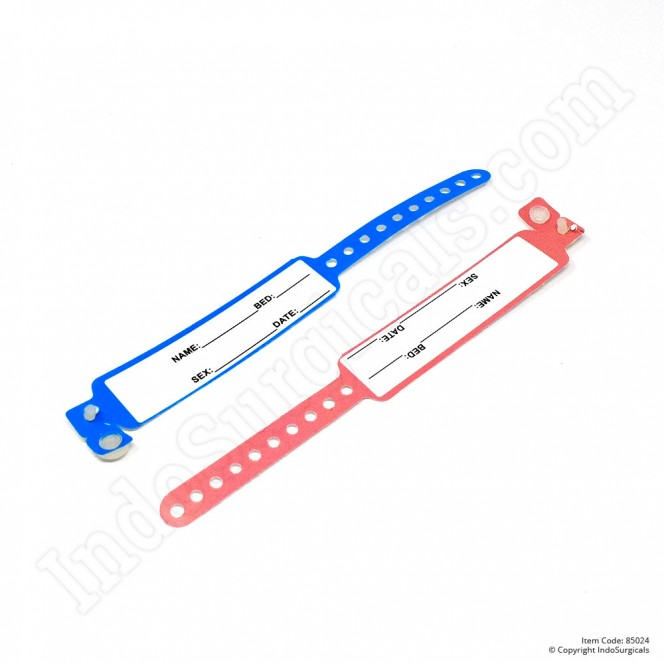A Comprehensive Guide to the Different Types of Patient Identification Band
A Comprehensive Guide to the Different Types of Patient Identification Band
Blog Article
Discovering the Different Types of Patient Identification Band Made Use Of in Clinical Facilities
In the intricate world of health care, the essential duty of Patient Identification bands typically goes unnoticed. These bands, differing from easy paper wristbands to advanced RFID bands, develop the backbone of Patient safety and security methods, guaranteeing precision in Patient Identification.
Recognizing the Importance of Patient Identification Bands
While they might seem like mere devices, Patient Identification bands play an important duty in medical facilities. These bands offer as an important tool for validating Patient identity, stopping medical errors connected to misidentification. Patient Identification bands likewise aid in improving administrative tasks, ensuring exact record-keeping and billing.
Typical Paper Wristbands: Their Use and Limitations
Traditional paper wristbands have been a staple in Patient Identification throughout different clinical centers. While their usage is prevalent, they nurture specific restrictions that might affect their efficiency in Patient management. This area will focus on the scope of their application and the inherent downsides connected with their use.
Paper Wristbands: Use Scope
In the world of Patient Identification, paper wristbands have actually long held an important duty. These bands are normally utilized in outpatient settings, where the Patient's keep is momentary. In spite of advancements in technology, the modest paper wristband continues to be a trustworthy and cost-effective service for Patient Identification in various healthcare scenarios.
Limitations of Paper Wristbands
Despite their prevalent usage, paper wristbands are not without their downsides. Their physical longevity is just one of the substantial constraints. Direct exposure to water, sweat, or harsh handling can provide them unreadable or perhaps cause them to break down. Furthermore, paper wristbands often lack the technical capacities of more modern-day alternatives, such as barcoding or RFID chips, restricting their capability to just presenting composed details. The lack of ability to upgrade or change the data on the wristband is another drawback. If the details is transcribed, legibility can be jeopardized, leading to prospective misidentification. Finally, paper wristbands can create pain or skin inflammation to some clients, specifically when worn for extensive periods.
Barcoded Wristbands: Developments in Patient Identification
While Patient Identification has actually long been a critical element of health care, the advent of barcoded wristbands represents a considerable jump ahead. These bands leverage the simplicity of barcoding innovation, permitting for Patient info to be rapidly checked and accessed. They boost the rate and accuracy of Patient Identification, decreasing the risk of clinical errors associated to misidentification.
Superhigh Frequency Identification (RFID) Bands: a Step Towards Futuristic Healthcare
The advancement of Patient Identification bands has actually produced the introduction of Superhigh frequency Identification (RFID) Bands (patient identification band). These ingenious tools existing vital advantages for medical care centers, using a more reliable and technologically progressed methods of Patient Identification. The execution of click for more info RFID in medical care is a substantial step towards an extra advanced technique to Patient management and safety and security
Understanding RFID Bands

RFID Bands: Trick Advantages
Largely, these bands boost Patient security by offering exact, instantaneous Identification, thus lowering medical mistakes. RFID bands can save a large amount of Patient information, consisting of clinical background and allergies, making it possible for customized care. Generally, RFID bands represent a substantial advancement in Patient Identification innovation, benefiting both clients and medical care service providers.
Carrying Out RFID in Medical Care
These bands supply a seamless way to track and determine individuals, guaranteeing their safety and security and boosting effectiveness in treatment procedures. RFID bands minimize clinical mistakes by providing precise Patient Identification, which is crucial in protecting against misdiagnosis or wrong medication administration. Thus, the implementation of RFID bands is a substantial step in the direction of boosting Patient security and health care distribution.

Color-Coded Wristbands: Helping in Quick and Accurate Medical Diagnosis
In the busy atmosphere of a medical facility, color-coded wristbands have arised as important devices for swift and accurate Identification of a client's medical problem. These wristbands, worn by individuals, carry details colors that match to various medical problems or standings. This system is developed to offer immediate aesthetic signs to healthcare companies, improving Patient look at here now safety and security and care top quality.
Methods for Reliable Application and Monitoring of Patient ID Bands
Attaining ideal use of Patient Identification bands demands a well-structured method for their execution and monitoring. The primary step includes training all wellness personnel on the importance of appropriately using and reviewing these bands. Healthcare facilities need to systematize the use of ID bands throughout all departments, making certain harmony and lowering discrepancies. Normal audits ought to be performed to validate adherence to plans and to correct find out any incongruities. Patient education is additionally essential; patients need to understand the purpose of the bands and the need for their continuous wear. patient identification band. Finally, it's important to have a backup strategy in location, such as barcode scanning or biometrics, to guarantee that Patient Identification is never endangered.
Verdict
Patient Identification bands are critical in clinical facilities to ensure safety and security and precision. Typical paper, barcoded, RFID, and color-coded wristbands each hold distinct advantages, varying from cost-effectiveness to sophisticated information storage and immediate medical alerts. Efficient implementation and management of these bands can substantially lower clinical mistakes, enhance effectiveness, and enhance total Patient care. Thus, understanding and using these Identification devices is critical for maintaining high requirements in health care.
These bands, differing from straightforward paper wristbands to advanced RFID bands, create the backbone of Patient security protocols, ensuring accuracy in Patient Identification.The evolution of Patient Identification bands has brought about the introduction of Radio Regularity Identification (RFID) Bands. Overall, RFID bands represent a considerable innovation in Patient Identification technology, profiting both clients and health care suppliers.
RFID bands lower clinical errors by giving accurate Patient Identification, which is critical in avoiding misdiagnosis or incorrect medication management. Patient education and learning is also vital; clients must recognize the objective of the bands and the requirement for their consistent wear.
Report this page